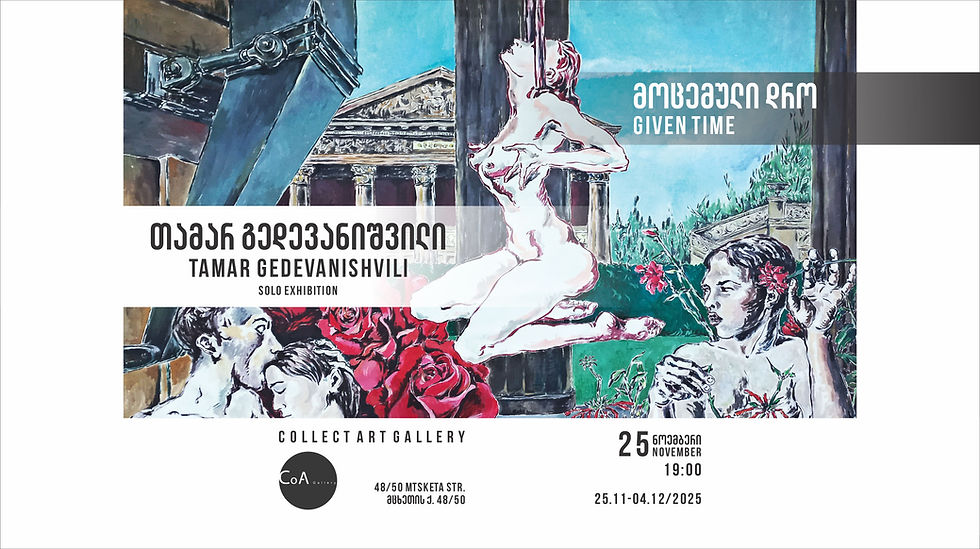Rubica von Streng/ Art & Activism
- Tamar Khelashvili
- Mar 25
- 3 min read
Rubica von Streng graduated from Berlin’s University of Arts UdK as a masterclass student in 2018. Her works, such as the paintings of the monumental “PortLand” cycle, have found a place in highly recognized art collections in Germany and aborad. They often deal with the beauty of nature, biodiversity and the future of civilization. Abstract portrait and landscape painting enter an exciting liaison in her oeuvre. Her multilayered, oil paintings on canvas and paper appear watercolor-like and radiate an unexpected lightness, however heavy and complex the subjects. The artist achieves this balancing act by means of her self-developed so-called arpeggio painting technique: wafer-thin layers of highly diluted oil paint are applied one after the other, creating a powerful ensemble of overlapping color spaces and forms that interact with fragments of varying shapes. “Rubica von Streng’s works provide viewers with a continuous and moving visual experience,” says Kerstin Bitar, chief art historian at Museum Rosengart Collection, Lucerne. “In an interplay with initially recognized motifs, they will constantly discover new figures, plants and landscapes. It is a continual process. This unfolding of very different visual elements in her pictures is extremely fascinating. Her PortLand works open up many different perspectives – into the depths, into the distance, into the future.”

The Final Tournament
For thousands of years, the horse has served humanity as a battle mount. In the Book of Revelation, for example, it was depicted as the mount of the Apocalypse. Thus, the horse has always been the accomplice of belligerent humans who dominated and fought against others. It is no coincidence that horses were and are given attributes such as proud, powerful, sublime, and dashing, to name but a few; attributes that are also given to those people who went and went into battle or war. The expressionist artist Franz Marc created his painting “Tierschicksale” in 1913: a premonition and warning of the First World War (1914–1918) that broke out shortly afterward. In this seminal work, the four horses can be seen without riders—but AFTER the battle, in which they were misused as cavalry horses by humans for their own purposes. They are marked, traumatized, partly disoriented—and riderless.
In Rubica von Streng's work “The Final Tournament”, the riders are not present either. To make peace and put an end to the destruction of the planet caused by human civilization, the horses have abandoned the riders. From then on, they refuse to serve them. Nevertheless, traces of a battle, bleeding bullet wounds, and arrowheads indicate that the animals are victims of war. But they have survived. Standing close together, they form a monument to peace.
Thus, “The Final Tournament” reverses the original Christian vision of the Horsemen of the Apocalypse: conquest, war, famine, and death do not take part in the tournament as personified scourges of humanity. The result of this final tournament is therefore not the impending destruction announced in the Book of Revelation, but a moment of reflection on those virtues that allow us to grow and prosper as humankind sustainably and in harmony with all inhabitants of the planet. The painting “The Final Tournament” confronts viewers with the crucial question of how much suffering and destruction still has to be caused now and in the future before we put an end to the violent actions with which we are making our environment increasingly uninhabitable for reasons




Comments